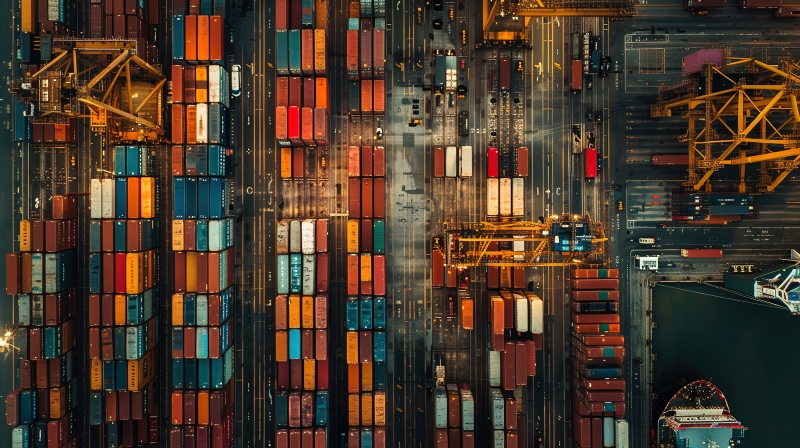A new field study reinforces the best ways to minimize forced labor in the supply chains of multinational organizations through a collective effort among governments, companies, consumers, and workers to prioritize ethical practices, transparency, and accountability
The International Labor Organization (ILO) estimates that 50 million people are living in slavery, and that human trafficking generates $236 billion in illicit profits annually. Simply put, forced labor is used because of economics, in which bad actors are motivated by financial profit. Further, the use of forced labor in the production of imported goods undermines legitimate trade and competition.
Given the scope of forced labor, governments, companies, consumers, and workers in mature markets play vital roles in alleviating human suffering, safeguarding human rights, and eliminating crimes of human exploitation. To collectively urge for action, a recent field study on forced labor in Malaysia and Thailand highlighted the necessity of a multi-pronged approach to combat forced labor in global supply chains around the world. The study was led by Heather Fischer, Senior Adviser of Social Impact and Human Rights at Thomson Reuters.
Defining forced labor
Forced labor, as defined by the ILO, encompasses situations in which individuals are coerced into working through the abuse of vulnerability, isolation, deception, intimidation, and threats, and often includes physical and sexual violence, excessive overtime, abusive living conditions, withholding of wages, debt bondage, retention of identity documents, abusive working conditions, and restriction of movement.
In addition, a range of goods are produced with the use of forced labor. For example, the U.S. Department of Labor currently lists 159 goods from 78 countries on its forced labor list, including:
-
-
- agricultural goods such as sugar cane, cotton, coffee, tobacco, cattle, rice, and fish;
- manufacturing goods including bricks, garments, textiles, footwear, carpets, and fireworks; and
- mined or quarried goods including most commonly gold, coal, and diamonds.
-
Laws in mature markets aim to reduce forced labor
Laws to eliminate forced labor have been growing in jurisdictions around the world over the last decade. Most recently, Canada’s modern slavery law went into effect in early 2024 and requires certain entities to file annual reports on their efforts to identify, address, and prevent forced labor and child labor.
The United Kingdom passed its modern slavery act in 2015 that required large businesses to publish an annual statement on their website about their efforts to prevent modern slavery in their businesses and supply chains. The statement must include information about areas of risk, steps taken to address the risk, and training available to staff.
In addition, The European Union is taking multi-pronged approach to combatting forced labor by examining what goods within its borders are made with forced labor for a draft legislation, and by passing mandated supply chain due diligence requirements effective in 2028. The objective of those new requirement is to compel companies to identify and address human rights impacts and potential violations in their operations, subsidiaries, and supply chains.
In the United States, The Uyghur Forced Labor Prevention Act (UFLPA), which became effective in June 2022, prohibited goods that are mined, produced, or manufactured wholly or in part in Xinjiang, China from being sold in the US. From June 2022 to October 2023, U.S. Customs has seized goods worth $2.096 billion due to violations of the UFLPA.
Corporate policies underscore good governance
According to the Dr. Jay Golden, Director of Syracuse University’s Dynamic Sustainability Lab, which conducted the field study in Thailand and Malaysia, many companies had adopted policies to address forced labor. For example, the study found that corporations leveraged codes of conduct to place responsibility for mitigating forced labor among their suppliers, while others were utilizing audits as an enforcement mechanism. In the latter cases, an auditor physically attends a work site — anywhere from a farm or factory to an office — to assess the conditions on the ground.
Further, in a separate study, Sedex, a global network dedicated to identifying and eliminating forced labor cases, suggested that these tools do work, noting that more than one-third (36%) of audits found multiple indicators of forced labor.
One of the steps that could be employed more often, however, is conducting a human rights impact assessment to help identify actual and potential human rights violations across a company’s enterprise and value chain. Conducting this exercise enables management to identify the biggest gaps in a company’s operations and could help to effectively prioritize resources to address the most pressing areas of improvement.
Investors and consumers could do more
At the same time, corporate action can only go so far. The Dynamic Sustainability Lab study highlighted several factors that underscore how investors and consumers can step up. For example, US investors could play a critical role in influencing companies to examine forced labor in their supply chains through incentives to companies whose governance practices minimize suppliers’ risk of using forced labor.
Also, findings from the field survey indicated that consumers play an important role in influencing companies through purchasing decisions but noted that there is lack of consumer awareness of forced labor risks. Consumers committing to their values by declining to purchase goods tainted by forced labor and checking if sustainable products are free of forced labor are two recommended actions from the study. The latter is likely to improve as apps and tools — such as Sweat & Toil, an app from the U.S. Labor Department that tracks child and forced labor — begin to make it easier for consumers to do on-the-spot queries by product name, maker, or brand to see how sustainable that product is.
Ultimately, eradicating forced labor requires a collective effort from governments, companies, consumers, and workers to prioritize ethical practices, transparency, and accountability throughout corporations’ global supply chains. Indeed, raising awareness, implementing effective policies, and making informed choices — all suggested by the Dynamic Sustainability Lab’s field study — could make possible a future in which no individual is subjected to the horrors of forced labor and human trafficking.
You can find out more about forced labor within supply chains here.








